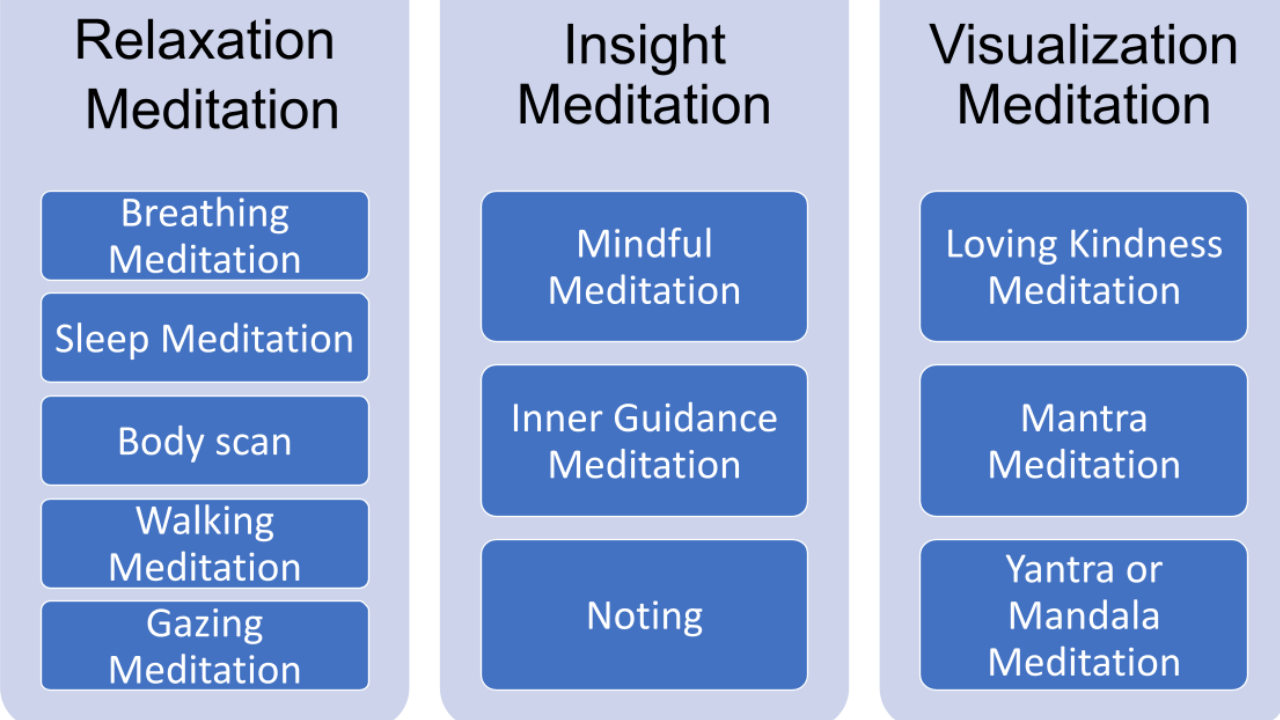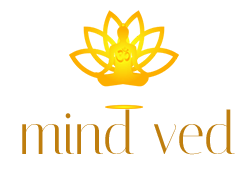15-Minute Meditation for the Beginners – Key Points
For this hyperactive and fast generation, taking a brain break is a must for physical and mental wellness. And Meditation helps them to slow down and go inward to get peace. Many people have the misconception that meditation is only for devoted yogis, monks, etc. but everyone should learn meditation and use it to get a healthy mind and body.
“Meditation isn’t about trying to throw ourselves away and become something better. It’s about befriending who we are already”– Pema Chodron, Tibetan Buddhist meditation teacher.
Here, Mindved provides you with essential information about meditation for beginners.
What is Meditation?

Meditation is a tool of being aware. It plays important role in our life. It is a simple way to focus on your breath. Why only Breath? We are alive because we are breathing. You may be living but, ask yourself, “Are you alive?”
Living is not just a breathing process. It is enjoying each & every breath. Meditation controls our mind and thoughts through the breath. The great part of meditation is, listening to own soul and inner mind.
Benefits of Meditation for Beginners
As Buddha says, “We can never obtain peace in the external world until we make peace with ourselves.”
We can control our minds with the help of meditation. Once we control our minds, it will help us to improve ourselves and lead to a successful journey in our life. It changes attitude towards life, provides peace and happiness.
Here are the benefits of Meditation for the Beginners as follows:
- You become a good analyzer and decision-maker.
- You feel relaxed and calm.
- Positive attitude
- Have more kindness and love for yourself and others.
- Problem-solving attitude.
- Improve understanding
- Improve focus and concentration
- Balance feelings and emotions
- Reduces stress, tension, depression
- You became more creative
Key Categories of Meditation
There are many types of meditations under different religions. Relaxation Meditation, Insight Meditation, and Visualization Meditation are key categories of Meditation based on scientific view or their purpose.
Beginners should understand the purpose behind each mediation and select the best of it.

Relaxation Meditation reduces stress, anxiety, you feel calm and peaceful.
- Breathing Meditation means focusing on one thing i.e., the breath. A focus on the rhythm of the inhaling and exhaling process, either at the nose or the chest or belly.
- Sleep Meditation produces a state of deep relaxation while awake or alert. It is also called Yoga Nidra. In Sanskrit, Nidra means sleep.
- Body Scan Meditation involves focusing on different areas of the body one by one and feel a sense from each body part.
- Walking meditation involves focusing on the movement of your feet and legs and the motion of the body. Syncing body and mind at the present moment is the goal of this meditation.
- Gazing Meditation is also known as Trataka in Sanskrit. It involves focusing on the object like the flame of the candle or a small black dot. It combines inner focus with outer focus.
Insight Meditation means seeing deeply or clearly in our inner mind and understanding the true nature of reality.
- Mindful Meditation: It involves your focus on being aware of our thoughts, feelings, body sensations, and surrounding at present moment. Mindfulness means present moment awareness and meditation is any technique that involves a focus on the mind on certain things.
- Inner Guidance Meditation: Innate wisdom in yourself understand the signs and messages from the universe or the divine and guide you through important decisions in life and keep us on the right path.
- Noting: In this, you have to calmly notice the thoughts which come, and you completely lost your awareness of breath.
Visualization Meditation: In this, you can use intentional thought and mental imagery to bring about the outcome that you desire. It develops creativity and concentration.
- Loving Kindness Meditation: Also known as Metta meditation. It develops an unconditional, inclusive love for yourself and others. It reduces anger, jealousy, and other painful emotions and improves relationships.
- Mantra Meditation: It involves repetitions of phrases (mantras), mostly by quiet chanting/ singing to promote focus or intention. Sound, rhythm, and speech have deep effects on your body, thoughts, and emotions.
- Yantra or Mandala: Yantra is the diagram of mantra and deity in a geometric pattern. Mandala has no specific meaning. But visualizing symmetrical and repetitive patterns, either with eyes or internally you connected to the brain by using a new pathway and the brain stimulates the sense of balance, clarity, and relaxation.
How to Meditate If You Are Beginner
If you are new to meditation, external guidance, whether from a person, live or recorded videos (YouTube, etc) is very helpful to understand the process. Here are the steps for meditation-
- Choose a calm and quiet place, free from distractions for meditation in-home or nature.
- Start with beginner’s meditation techniques which are listed above. Mindful meditation is a simple and most popular technique.
- Keep your back straight and choose the sitting position which suits you. So that you can sit relaxed and comfortably. You can sit on a chair or lie down on a mat if the sitting position doesn’t work for you.
- Close your eyes if your mind is very busy or you can keep your eyes slightly open, with a lowered and soft gaze. Do experiment and see what’s suits you.
- For beginners choose a short time from 5 to 10 minutes. You can increase it as per your capacity or keep it as such. Consistency is important.
- Notice your body, make sure you are in immobile position and relaxed.
- Feel your breath, inhale and exhale slowly and focused.
- Consider the breath is your anchor, whenever your mind wandered, simply bring it back to the breath. Be kind-hearted with your winding mind. Don’t try to force anything. Try to bring yourself back to the present, whenever your mind slips away from present moments.
- Keep a slight smile on your face
- Slowly open your eyes, take a moment to notice the sound around you. Feel like your body is light weighted. Notice your thoughts and feelings.
- Add meditation to your daily routine. In case of a hurry, you can practice it for 5 min but be regular.
Key Points for The Beginners to Know Meditation Better
1. Practice Meditation Without Expectations
Be clear, that meditation is not just an activity or a physical exercise. This is not the quick fix process that will make your mind clear with endless thoughts and memories. You can achieve your goal by taking proper efforts and maintaining regularity.
2. Body Posture for Meditation
Your body posture has a direct influence on your state of mind. Bad posture reduces focus. If you sit in slouching position, your mind feels sluggish.
Traditional mediational poses are – Full lotus, Half- lotus, Burmese, Kneeling, lying and walking, etc. For beginners, sitting comfortably with good posture is sufficient.
Use a mat and sit on the floor or the chair, if sitting on the floor is not possible. You don’t need to sit crossed-legged if you are not comfortable. Put your hands on your knees, close your eyes and focus on breathing.
While sitting on the chair, make sure that sit away from the back of the chair and rest your legs firmly on the ground.
3. Proper Meditative Breathing for Beginners
Proper breathing is essential for proper meditation. Breath is the best link between our body and mind.
By taking control of your breath, you can control your mind. Awareness of breath and focus on your breath is important in meditation.
Breath usually follows the flow of thoughts- When someone becomes angry and anxious, then that person will breathe from the chest and have a shallow, irregular pattern of breathing. While someone is calm and focused, then that person will have deep abdominal breath and a regular pattern of breathing.
Learn the technique of breathing but do not breathe forcefully.
4. Choose a Time to Meditate
Early morning and evening are the best time to practice meditation because the environment is cool and calm. If you meditate at the same time each day, it will develop a habit in you.
The beginner can start meditation from 5 minutes to 10 minutes for a few days. After that, you can practice from 15 minutes to 20 minutes daily.
A few times, due to some unavoidable circumstances you will not get sufficient time, then at least try to do it for 5 minutes.
Why People Don’t Meditate?
Not everyone knows the benefits of meditation. Some people are lazy and they are not a morning person and they thought meditation can only do in the early morning.
People thought that you need to be spiritual to meditate. Some people gave the reason for their tight schedule of work.
Read More:
Conclusion
The simple techniques of Meditation for Beginners motivate our brain with positive thoughts and improve immune functions among the meditators. Meditation is a tool of being aware. This is an easy process to better understand yourself.
FAQ:
Q. What are the best meditation apps for beginners?
A. Headspace for daily use, Simple habit for newbies, Insight timer are some of the best meditation apps.
Q. Can children meditate?
A. Yes, children can meditate. It is helpful for their concentration and focuses on their study. It improves their memory too.
Q. I feel meditation boring, what do I do?
A. In the beginning, it may be boring. Just do it step by step and try again. Or you can choose different methods of meditations- like music meditation, walking meditation, mantra meditation if you feel bored sit calm for a few minutes.







Beautiful explanation of meditation
Thanks
What is proceess to connect with you.
please contact us via this email id contact@mindved.com
We really appreciate your kind words.